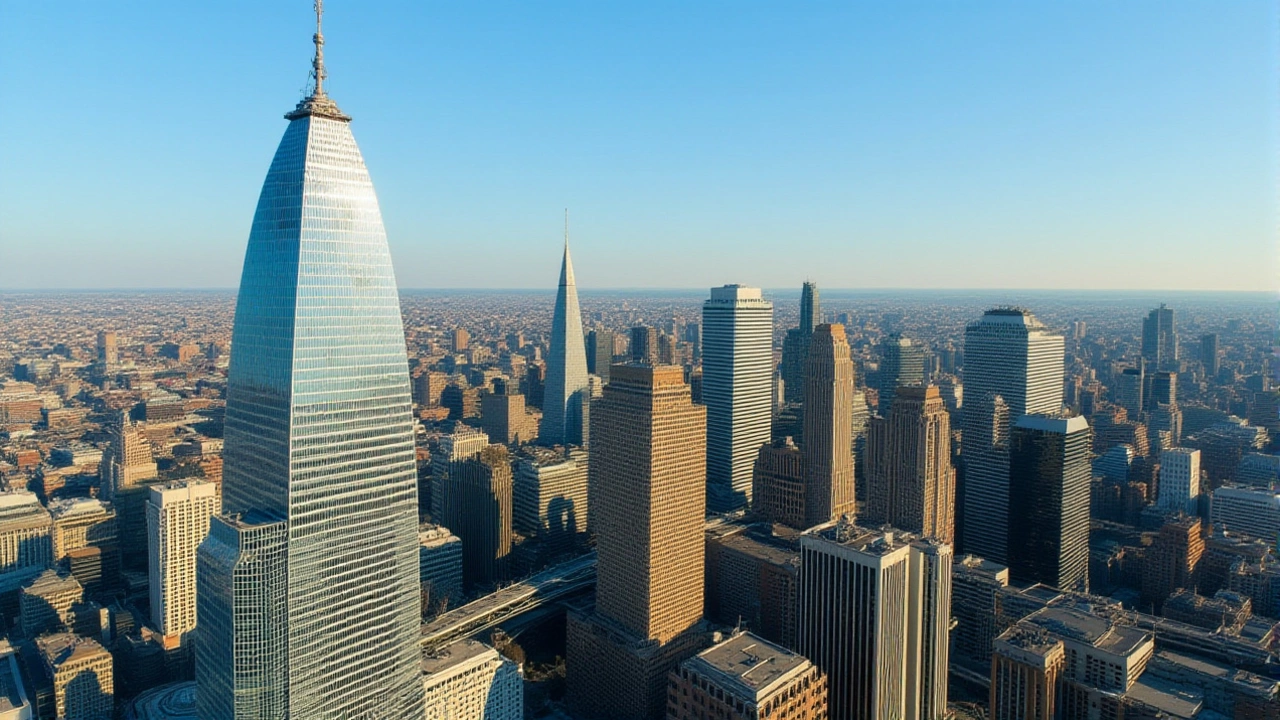- 0
The FTSE 100 closed at 9,422.85 points on November 21, 2025London, marking its lowest level in a month and capping a 2.5% weekly plunge — its worst since April. Investors weren’t just reacting to a single bad number. They were wrestling with a perfect storm: fading consumer confidence, a slowdown in private sector activity, and mounting fears that the AI boom has inflated equity prices beyond reality. The London Stock Exchange shut down for the day with the index off 0.30% from its previous close, but the damage ran deeper. The day’s intraday swing — from a high of 9,507.17 to a low of 9,428.49 — revealed how jittery traders had become. Even the data sources couldn’t agree on the exact numbers. Trading Economics, Nasdaq, Standard.co.uk, and Fidelity.co.uk all reported conflicting figures within hours. That’s not just reporting noise. It’s panic in real time.
Why the Sell-Off? It’s Not Just AI
The headline blame? An AI-driven market bubble. And yes, tech-heavy indices in the U.S. and Europe have soared on AI hype. But the real trigger in London was something far more mundane — and far more damaging. UK retail sales fell 1.1% in October, the first monthly drop in five months and worse than the 0.1% forecast. The Office for National Statistics confirmed it: households are tightening belts. Meanwhile, the GfK and Nuremberg Institute’s consumer sentiment index plunged to -19, down two points from the prior month. Neil Bellamy, Consumer Insights Director at GfK, put it bluntly: "This is a bleak set of results as we head towards next week’s Budget. A fall across all five measures suggests the public is bracing for difficult news." The S&P Global UK Composite PMI — a broad gauge of private sector health — slid to 50.5 from 52.2, barely above contraction territory. Services, which make up 80% of the UK economy, dipped to 50.5 from 52.3. Even manufacturing, which had been a rare bright spot, barely held above 50. This wasn’t a blip. It was a systemic softening.Who Got Hit Hardest? The Cyclicals
When the economy sputters, investors flee risk. That’s why Rolls-Royce dropped 3.34%, Babcock International slid 3.01%, and mining giant Antofagasta tumbled 3.36%. BP and Shell both fell over 1%. These are the companies that thrive when consumers are spending and industries are expanding. Now, they’re the first to feel the chill.
The Silver Lining? A Few Bright Spots
Not everyone lost. Frasers Group surged 3.80%, riding a wave of discount retail demand. B&M European Value added 1.86%, and even the London Stock Exchange itself rose 1.85% — perhaps a sign that institutional players still see value in the market’s structure, even as individual stocks stumble.2025 Was a Rollercoaster — But 2026 Might Be Calmer
Here’s the twist: despite Friday’s drop, the FTSE 100 is still up 21% year-to-date (excluding dividends). That’s nearly four times the 20-year average. Compared to last year, it’s 14.85% higher. So why the gloom? Because the market’s run-up has been so steep, so fast, that even a modest correction feels like a crash. The Motley Fool warned: "After a 20%+ gain this year and a near-10% gain last year, I wouldn’t be surprised if we were to see muted returns from the Footsie in 2026." They’re talking about "mean reversion" — the idea that after extreme outperformance, returns naturally settle back toward historical norms.
What’s Next? The Budget and the Bigger Picture
All eyes now turn to next week’s UK Budget. Will the Chancellor announce tax hikes to plug a fiscal gap? Or stimulus to revive consumer spending? Bellamy’s warning about "difficult news" suggests the former. Analysts are bracing for austerity measures that could further dampen household budgets. Meanwhile, the Bank of England remains in wait-and-see mode, wary of raising rates but also unwilling to signal easy money amid inflationary pressures from lingering supply chain issues.What’s clear is this: the FTSE 100’s rally in 2024 and 2025 was fueled by global liquidity, cheap credit, and tech optimism. Now, the foundations are cracking. Retail sales are falling. Confidence is evaporating. And the companies that once looked like safe bets are suddenly vulnerable. The market isn’t broken — but it’s no longer in a bubble. It’s in a reckoning.
Frequently Asked Questions
Why did the FTSE 100 fall so sharply on November 21, 2025?
The FTSE 100 dropped due to a combination of weak UK economic data — including a 1.1% monthly fall in October retail sales and a consumer sentiment index plunging to -19 — and renewed fears that AI-driven valuations have become detached from fundamentals. The sell-off was broad-based, hitting cyclicals like Rolls-Royce and miners hardest, as investors shifted toward safety ahead of the upcoming Budget.
How does this affect regular investors in FTSE 100 funds?
Investors in FTSE 100 tracker funds saw a 2.5% weekly loss, the steepest since April, despite the index being up 21% for the year. While long-term holders may weather the dip, short-term volatility could trigger panic selling. With mean reversion likely in 2026, returns may stabilize — but only if the UK economy avoids a deeper slowdown triggered by fiscal tightening.
What role did AI fears play versus actual economic data?
AI fears amplified the sell-off, but weren’t the primary driver. The real trigger was tangible data: retail sales falling for the first time in five months, services PMI slipping to 50.5, and consumer confidence hitting a 10-month low. AI was the narrative that gave investors permission to exit overvalued stocks — especially in sectors like industrials and mining that had ridden the tech rally.
Why are companies like Rolls-Royce and Antofagasta falling more than others?
Rolls-Royce and Antofagasta are highly sensitive to economic cycles. Rolls-Royce depends on global aviation and industrial demand, while Antofagasta mines copper — a metal tied to construction and manufacturing. As UK and European growth slows, demand for these goods drops. Their 3%+ declines reflect investor expectations of lower future earnings, not just short-term sentiment.
What should investors watch for in the upcoming UK Budget?
The Budget will reveal whether the government plans to cut spending or raise taxes to manage fiscal deficits. If austerity measures are announced — such as freezing benefits or increasing VAT — it could push consumer spending further down, dragging the FTSE 100 lower. Conversely, targeted support for energy or housing might stabilize sentiment. Analysts are watching for any signal of a shift in economic policy direction.
Is the FTSE 100 still a good long-term investment despite the recent drop?
Yes — but with caveats. The index is up 21% in 2025 and 14.85% year-over-year, supported by global giants like Shell and BP that pay strong dividends. However, future returns may be muted as the UK economy slows. Investors should focus on dividend yield and balance sheet strength rather than growth hype. The FTSE 100 isn’t dead — it’s just entering a more cautious, less glamorous phase.

